AWS S3 Static page
Build a static page with Route 53, CloudFront and S3 by CDK Python.
Nowadays, the static pages become more popular due to advances in frontend technologies like CSS and Javascript, which give users a richer and more interactive experience.
This pattern shows step-by-step how to build a static page by combination of Amazon Web Services Route 53 Hosted Zone, CloudFront Distribution and S3 Storage.
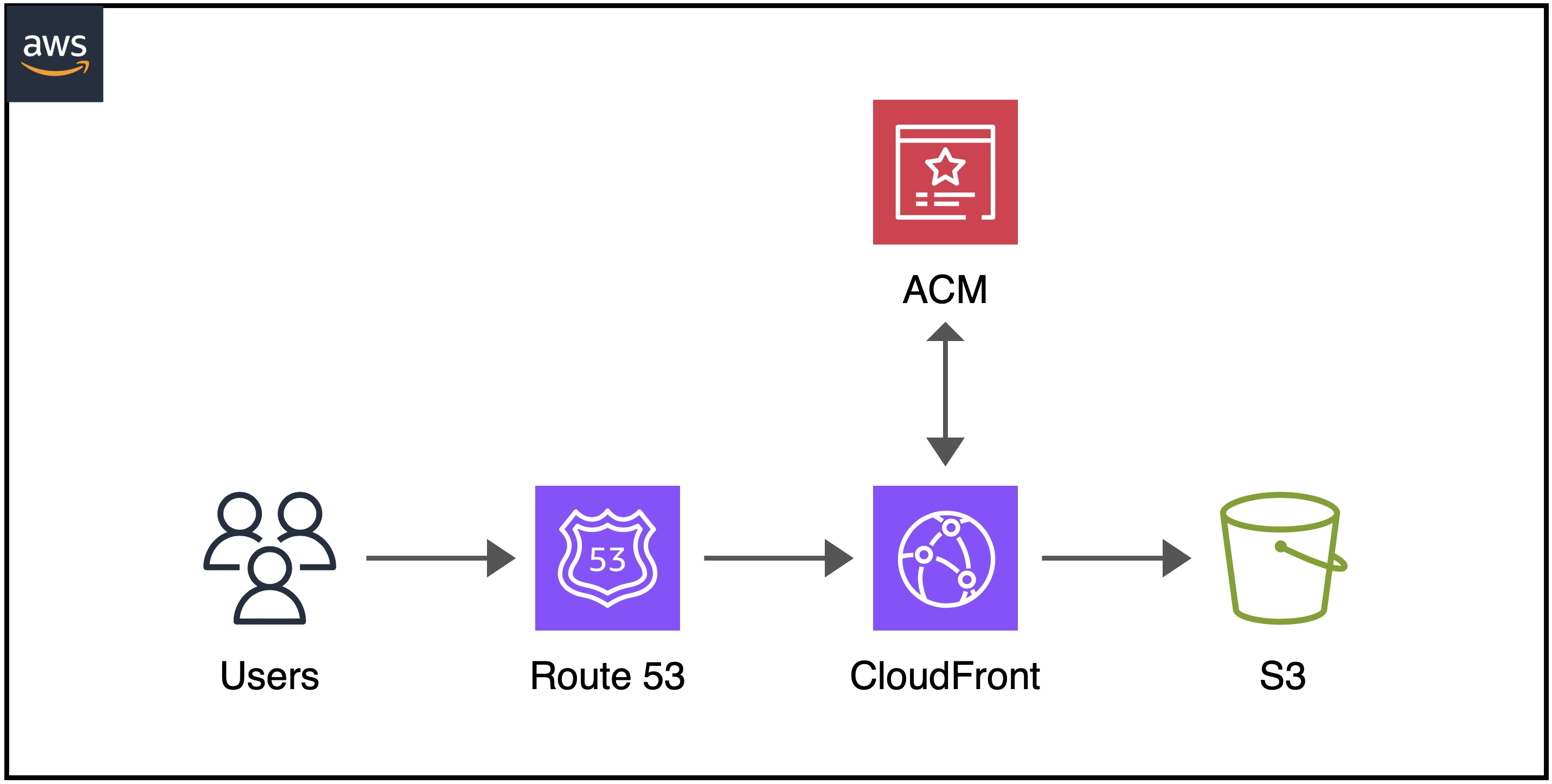
Introduction
All codes written in the CDK (Python) to automatically create a stack including domain name S3 bucket for static website hosting, a CloudFront distribution integrated with Route 53 hosted zone and ACM certificate issued by Amazon Web Services. Providing the least privilege IAM role for S3 to enable static website hosting.
Requirements
- A domain name registered from AWS or other DNS providers.
- Python version 3.9 or above.
- Amazon Web Services (AWS) Account: The IAM user must have sufficient permissions to make necessary AWS service calls and manage AWS resources.
- AWS Cloud Development Kit (CDK) in Python installed.
Get started with CDK
Create and go to the working folder, then initialize the CDK Python project from CLI Terminal.
mkdir cdk-staticweb
cd cdk-staticweb
cdk init app --language python
Activate Python environment.
source .venv/bin/activate
Install the required packages.
pip install -r requirements.txt
Project structure
If configured properly, the project structure will be shown under the working directory \cdk-staticweb as below:
cdk-staticweb
├── static-page
│ ├── index.html
│ └── styles.css
├── cdk-staticweb
│ ├── __init__.py
│ └── cdk-staticweb_stack.py
├── app.py
├── README.md
└── requirements.txt
Project structure rundown
/static-page/- Contains index.html for static web hosting./cdk-staticweb/- for creating the deployment stack./app.py- main project function./README.md- Introduction and Instructions./requirements.txt- for required packages' installation.
Working with AWS Management Console
Now we get started with AWS Management Console to create a hosted zone and validate the ACM public certificate issued by Amazon Web Services as a preparation step for CDK application deployment.
Route 53 hosted zone
1. Create a hosted zone
Create a hosted zone with your domain name in Route 53.
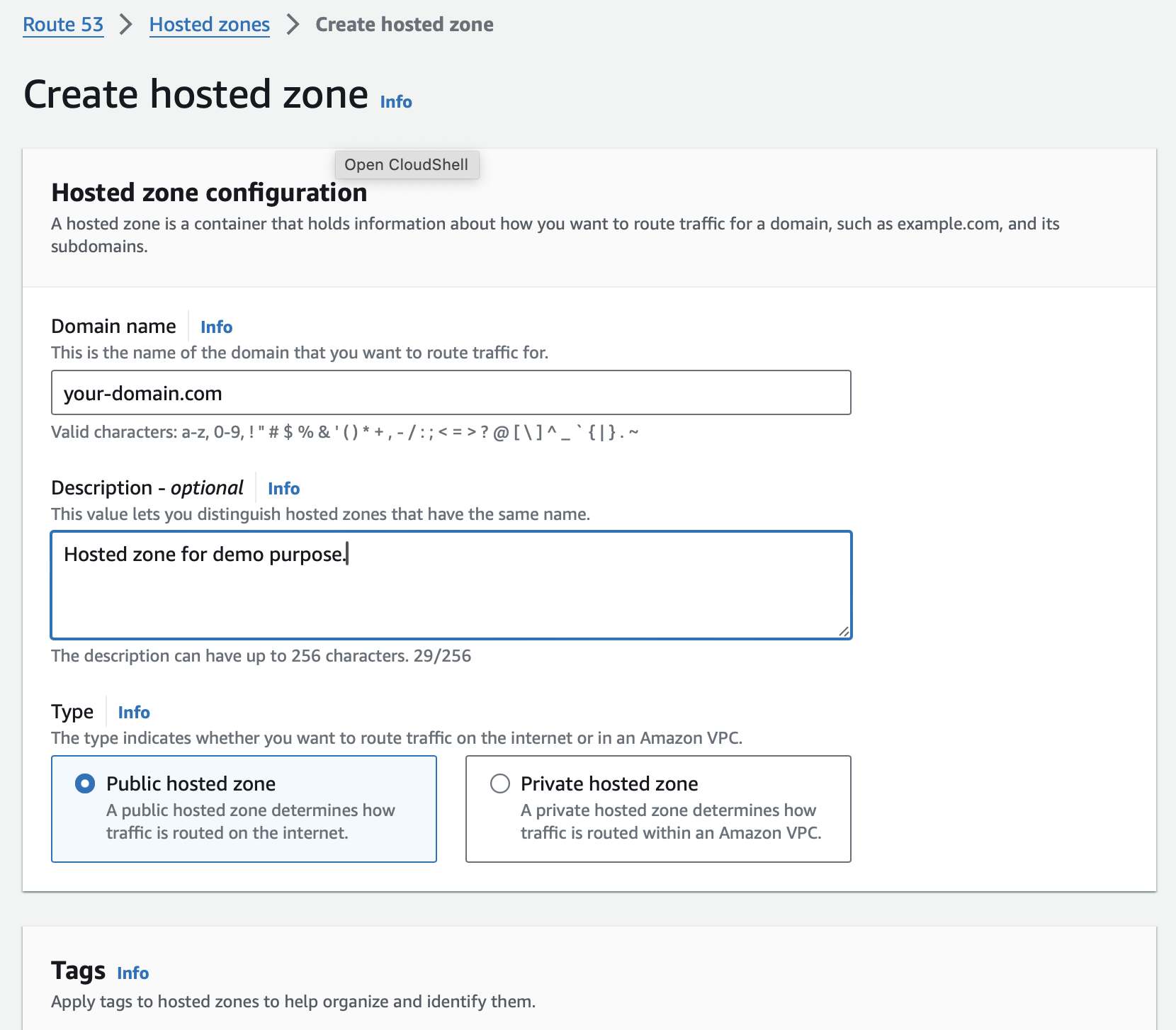
Then press Create hosted zone to create a hosted zone under your domain name.
After your hosted zone created, you will find name servers in Hosted zone details. Follow these steps to configure your DNS:
- Record all 04
Name serverslisted below. - Go to your domain registrar to create a new DNS record with
NStype for your domain then update the name servers to use with Route 53.
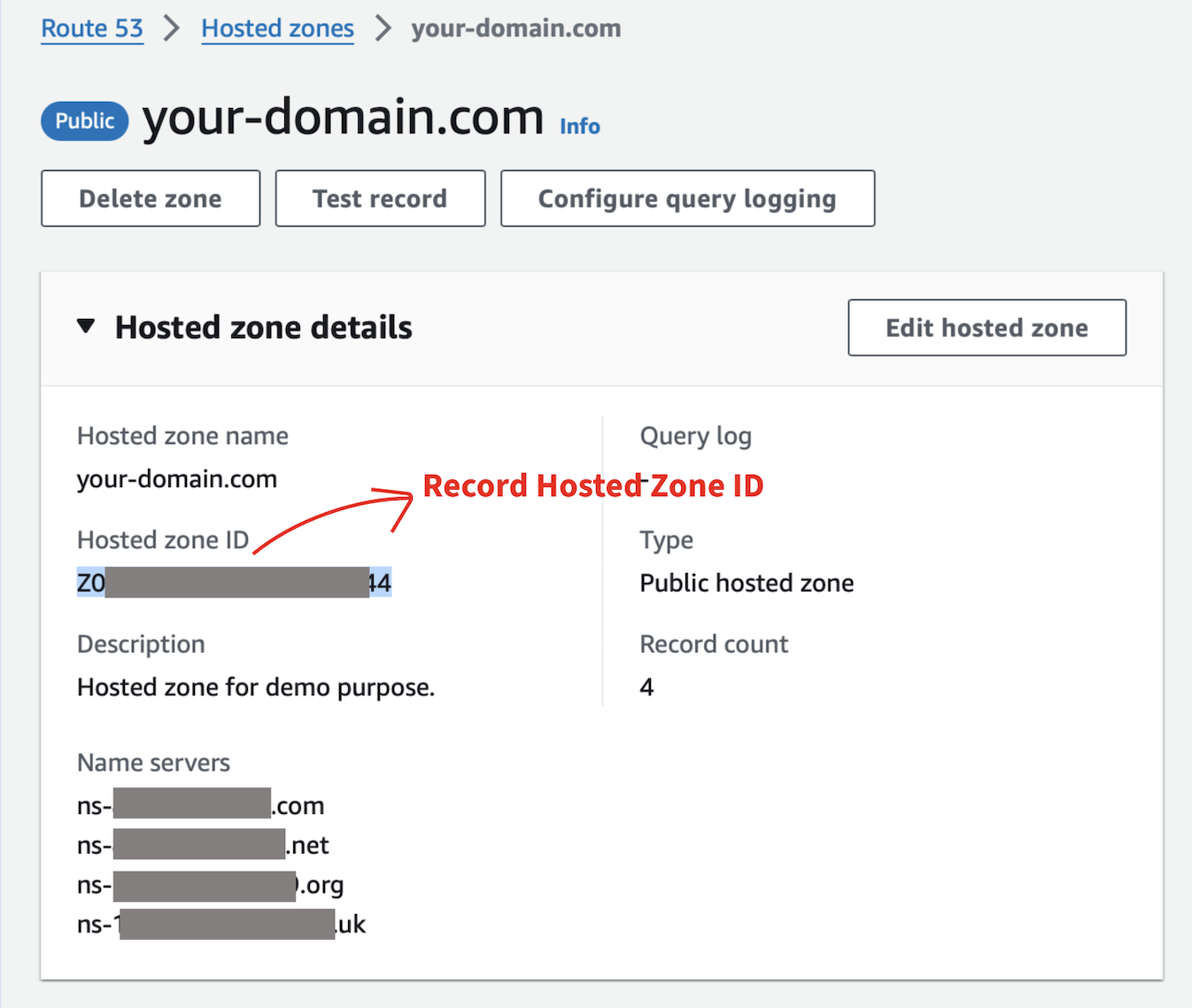
2. Request public certificate from ACM (AWS Certificate Manager)
 In the scenario, you may request both
In the scenario, you may request both your-domain.com and www.your-domain.com and DNS validation method as recommended. Then press Request.
3. DNS validation
- Press
Create recordsfor DNS validation. - If the validation is successful, record the
Certificatesname for later use in CDK deployment.
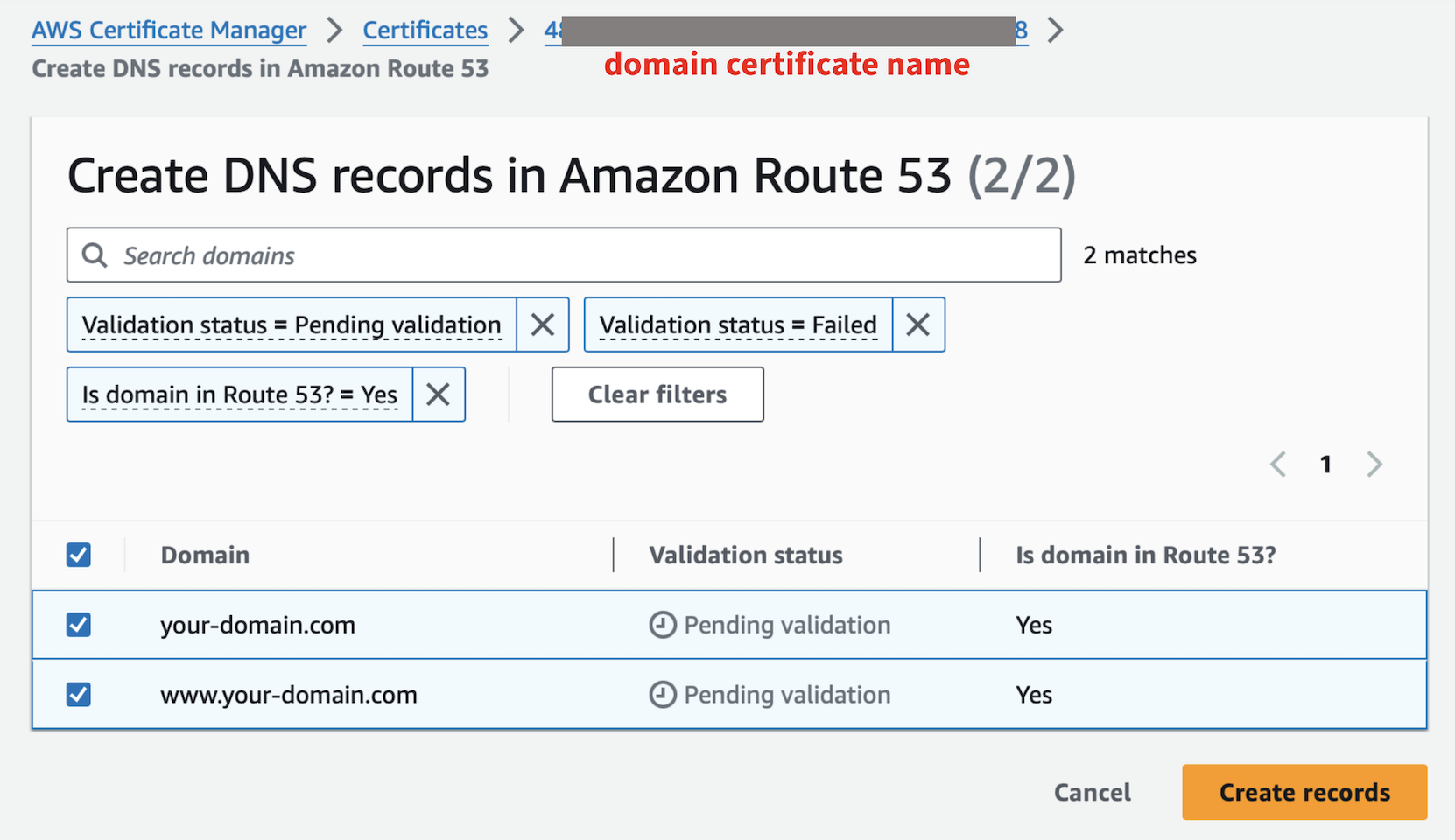
Static page preparation
Create a folder for static content.
mkdir static-page
For simple case, you can create a index.html file and save in folder static-page as below:
<!DOCTYPE html>
<html>
<head>
<style>
.center_div {
border: 1px solid gray;
margin-left: auto;
margin-right: auto;
width: 90%;
background-color: #d0f0f6;
text-align: left;
padding: 8px;
}
</style>
</head>
<body>
<div class="center_div">
<h1>Static Page hosted on AWS S3!</h1>
<p>This page is simple html for demo purpose only.</p>
</div>
</body>
</html>
From my GitHub repo, I took the index.html built with CSS and Javascript to create a resume page deployed from Amazon API Gateway REST API as instructed in AWS API Gateway with DynamoDB.
Create CDK Stack
#!/usr/bin/env python3
import aws_cdk as cdk
from cdk_staticweb.cdk_staticweb_stack import CdkStaticwebStack
app = cdk.App()
CdkStaticwebStack(app, "CdkStaticwebStack", synthesizer=cdk.DefaultStackSynthesizer(generate_bootstrap_version_rule=False))
app.synth()
from aws_cdk import (
Stack,
Aws,
aws_route53,
aws_route53_targets,
aws_s3,
aws_s3_deployment,
aws_iam,
aws_cloudfront,
aws_cloudfront_origins,
aws_certificatemanager
)
from constructs import Construct
class CdkStaticwebStack(Stack):
def __init__(self, scope: Construct, construct_id: str, **kwargs) -> None:
super().__init__(scope, construct_id, **kwargs)
# Your code start here
domain_name = "your-domain.com"
hosted_zone_id = <YOUR HOSTED ZONE ID FROM STEP 1>
domain_cert_name = <YOUR CERTIFICATE NAME FROM STEP 1>
hosted_zone = aws_route53.HostedZone.from_hosted_zone_attributes(self, "WebHostedZone",
zone_name=domain_name,
hosted_zone_id=hosted_zone_id)
arn_cert = f"arn:aws:acm:{Aws.REGION}:{Aws.ACCOUNT_ID}:certificate/{domain_cert_name}"
domain_cert = aws_certificatemanager.Certificate.from_certificate_arn(self, "DomainCert",
certificate_arn=arn_cert)
web_bucket = aws_s3.Bucket(self, "WebBucket",
bucket_name=domain_name,
block_public_access=aws_s3.BlockPublicAccess(block_public_policy=False),
website_index_document="index.html"
)
policy_statement = {
"Sid": "PublicReadGetObject",
"Effect": "Allow",
"Principal": "*",
"Action": ["s3:GetObject"],
"Resource": [f"{web_bucket.bucket_arn}/*"]
}
web_bucket.add_to_resource_policy(aws_iam.PolicyStatement.from_json(policy_statement))
CDK will write all files in static-page folder to S3 bucket.
aws_s3_deployment.BucketDeployment(self, "DeployFiles",
sources=[aws_s3_deployment.Source.asset("./static-page")],
destination_bucket=web_bucket)
Apply both domain names as your-domain.com & www.your-domain.com with same certificate.
web_distribution = aws_cloudfront.Distribution(self, "WebDistro",
enable_ipv6=True,
default_root_object="index.html",
domain_names=[domain_name, f"www.{domain_name}"],
certificate=domain_cert,
http_version=aws_cloudfront.HttpVersion.HTTP2_AND_3,
default_behavior=aws_cloudfront.BehaviorOptions(
origin=aws_cloudfront_origins.S3Origin(web_bucket)
)
)
Create alias records to route traffic both ip4 & ip6 to CloudFront distribution for both domain names.
aws_route53.ARecord(self, "DomainIp4",
zone=hosted_zone,
target=aws_route53.RecordTarget.from_alias(
alias_target=aws_route53_targets.CloudFrontTarget(web_distribution)))
aws_route53.ARecord(self, "wwwDomainIp4",
record_name="www",
zone=hosted_zone,
target=aws_route53.RecordTarget.from_alias(
alias_target=aws_route53_targets.CloudFrontTarget(web_distribution)))
aws_route53.AaaaRecord(self, "DomainIp6",
zone=hosted_zone,
target=aws_route53.RecordTarget.from_alias(
alias_target=aws_route53_targets.CloudFrontTarget(web_distribution)))
aws_route53.AaaaRecord(self, "wwwDomainIp6",
record_name="www",
zone=hosted_zone,
target=aws_route53.RecordTarget.from_alias(
alias_target=aws_route53_targets.CloudFrontTarget(web_distribution)))
CDK Deployment
# Test and create CloudFormation template
cdk synth
# Deploy appliction
cdk deploy
Checking and Testing
After deployment successfully, you will find results as below:
CloudFormation CDK Stack
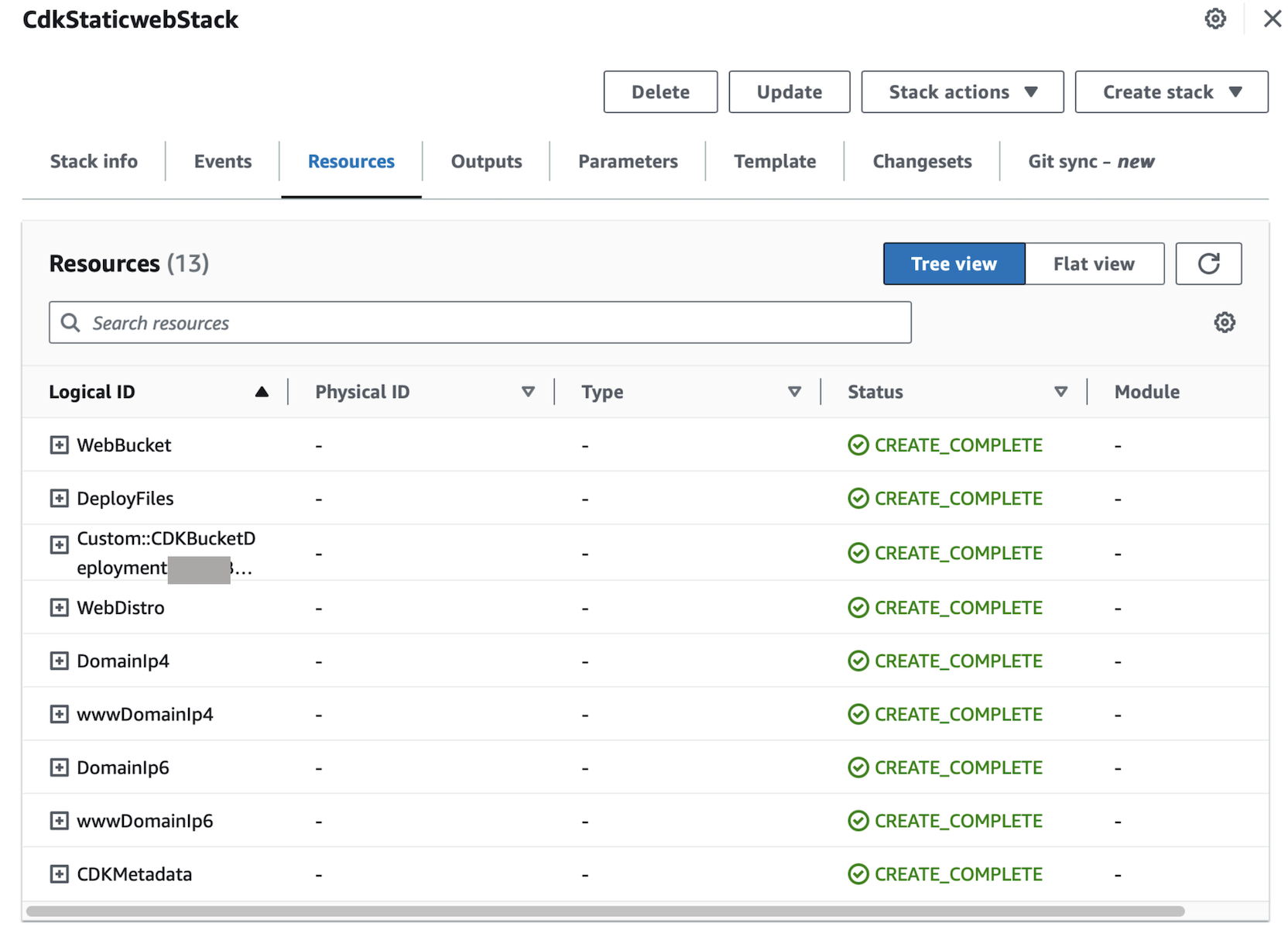
Bucket configuration for static website hosting
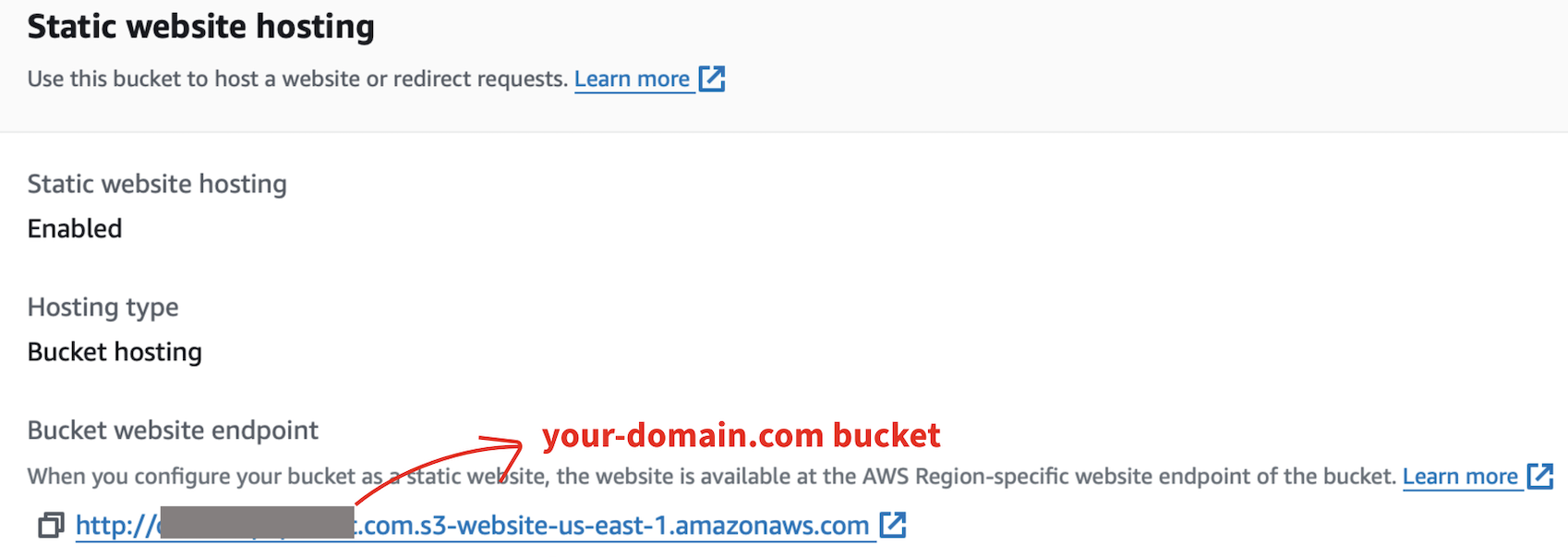
Bucket policy
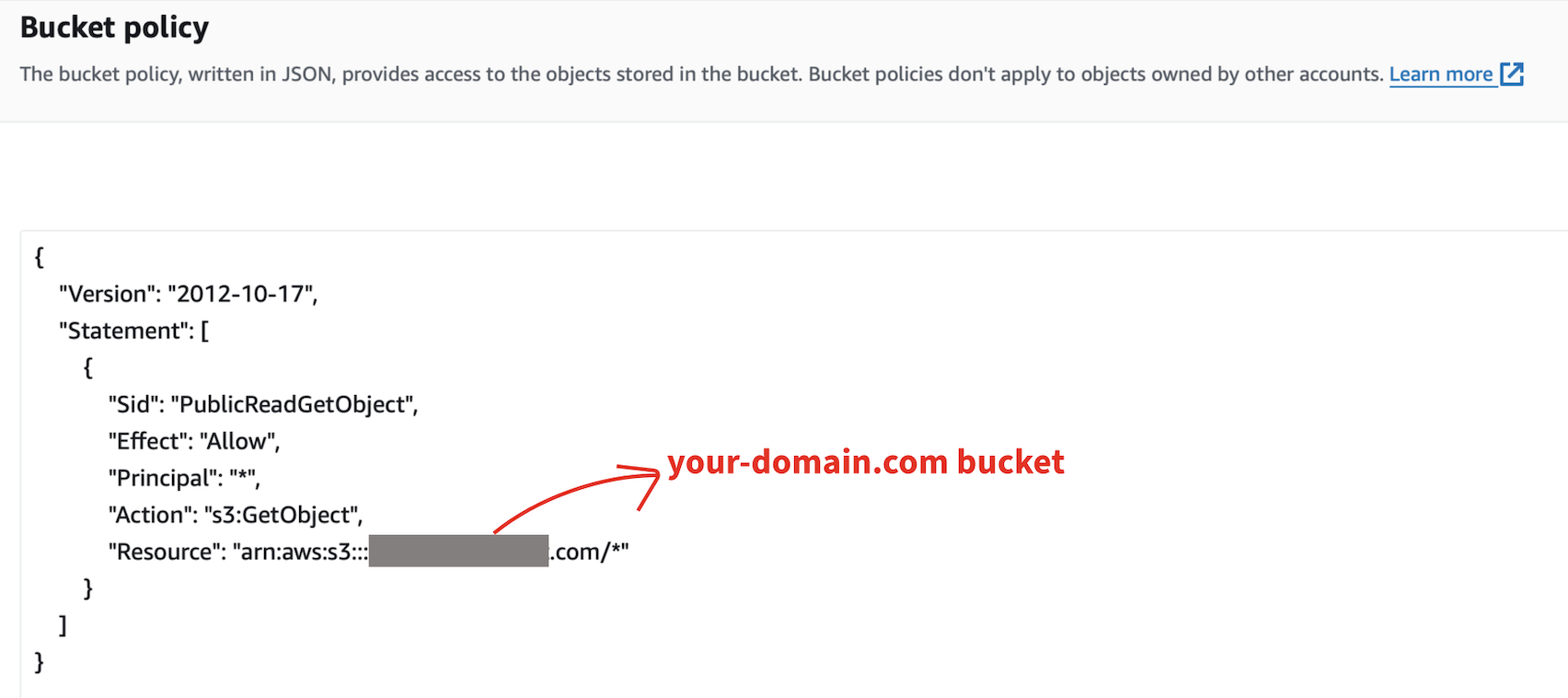
CloudFront Distribution
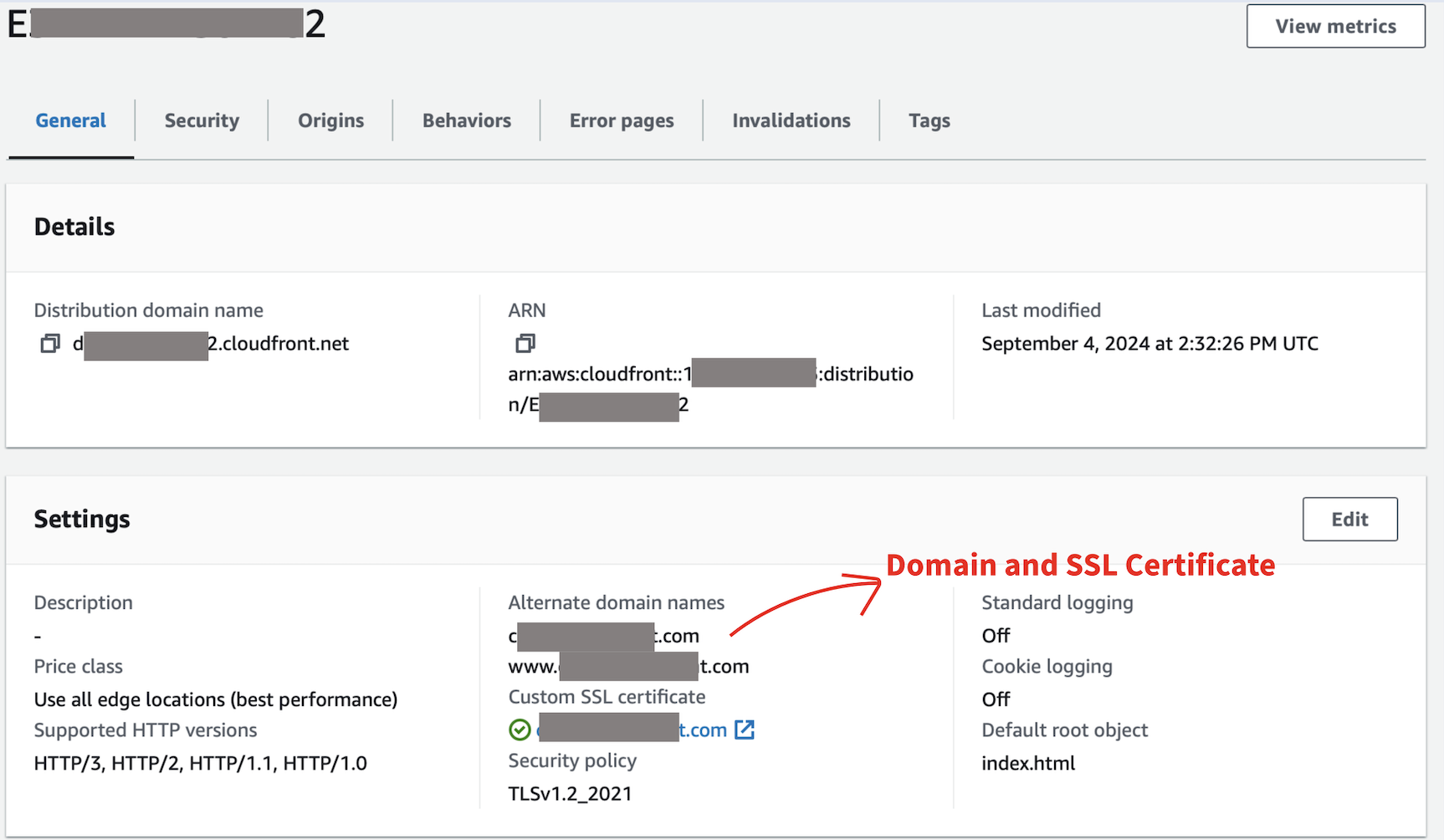
Test your domain name

Cleanup
- Delete CDK stack.
cdk destroy
- Manually delete
your-domain.combucket. - Manually delete hosted zone and domain certificate.
Thanks a lot for your reading!